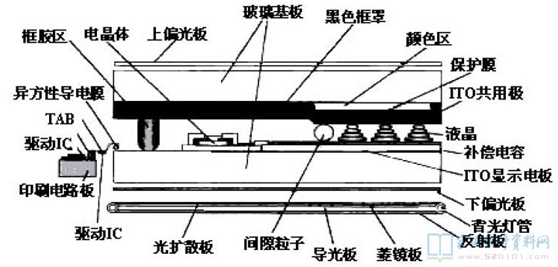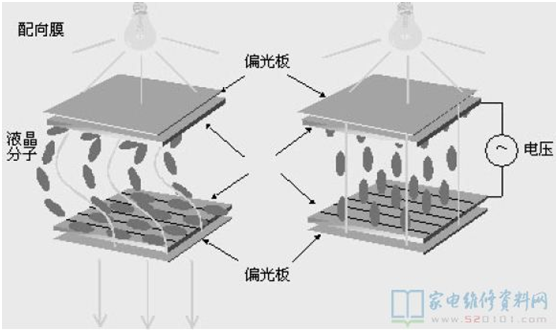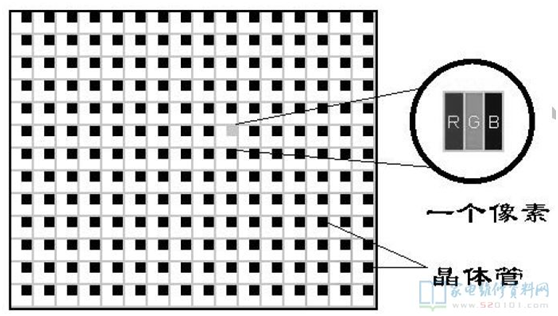Principle of industrial liquid crystal display
Date:2019-07-10
With the wide application of industrial LCD screen, we need to understand the common sense of industrial LCD screen in R & D and production of products. The following is how to realize the display of pictures and information on Industrial LCD screen, that is, the working principle of industrial LCD screen:
The imaging principle of liquid crystal display screen is to place the liquid crystal between two pieces of conductive glass. Driven by the electric field between the two electrodes, the electric field effect of twisted nematic liquid crystal molecules is caused, so as to control the light source transmission or shielding function, and produce light and dark changes between the power on and off, so as to display the image. If a color filter is added, the color image can be displayed. The alignment film is installed on the two glass substrates, so the liquid crystal will be aligned along the groove. Because the groove of the alignment film deviates 90 degrees, the liquid crystal molecules become torsion type. When the glass substrate is not added with an electric field, the light passes through the polarizing plate to twist 90 degrees with the liquid crystal, and through the lower polarizing plate, the liquid crystal panel displays white (as shown in the left of Figure 1); When the electric field is applied to the glass substrate, the alignment of the liquid crystal molecules changes, and the light is kept in the original direction through the gap of the liquid crystal molecules, and is shielded by the lower polarizing plate, so the light is absorbed and cannot be transmitted, and the liquid crystal panel displays black (as shown in the right of Figure 1)). LCD is based on the presence or absence of this voltage, so that the panel to achieve the display effect.

图1
TFT is the abbreviation of "thin film transistor", which generally refers to thin film liquid crystal display, but actually refers to thin film transistor (matrix) - it can "actively" control each independent pixel on the screen, which is the origin of the so-called active matrix TFT. So how did the image come into being? The basic principle is very simple: the display screen is composed of many pixels that can emit light of any color. As long as you control each pixel to display the corresponding color, you can achieve the goal. Backlight technology is generally used in TFT LCD. In order to accurately control the color and brightness of each pixel, it is necessary to install a shutter like switch behind each pixel. When the "shutter" is open, the light can pass through, but when the "shutter" is closed, the light cannot pass through. Of course, in technology, it is not as simple as just mentioned, as shown in Figure 2: a finished TFT display screen is generally composed of a sandwich, and each layer of the sandwich is composed of polarizer, glass substrate, color filter, ITO electrode, etc. Between these two layers is the liquid crystal layer. Polarizer and color filter determine how much light can pass through and what color light can be generated. The liquid crystal layer is located between two glass substrates. There are fed transistors on the upper glass substrate and common electrodes on the lower layer. They can generate a precisely controlled electric field, which determines the arrangement of liquid crystal. We all know three primary colors, so each pixel on the display screen needs three similar basic components described above to control red, green and blue colors respectively.

图二
At present, twisted nematic TFT LCD is the most commonly used. The figure below is the basic working principle of this kind of TFT display.

图三
There are grooves on the upper and lower layers, in which the grooves on the upper layer are arranged longitudinally and the grooves on the lower layer are arranged horizontally. When the liquid crystal without voltage is in a natural state, the light emitted from the twisted nematic TFT display working principle schematic layer will be distorted by 90 degrees after passing through the interlayer, so that it can pass through the lower layer smoothly.
When a voltage is applied between the two layers, an electric field is generated, and the liquid crystals are aligned vertically, so the light does not twist - as a result, the light cannot pass through the lower layer (see Figure 3, right).

Fig. 4 color filter membrane
The TFT pixel architecture is shown in Fig. 4. Color filters are divided into red, green and blue according to the color, and are arranged on the glass substrate in turn to form a group (dot pitch) corresponding to a pixel. Each monochrome filter is called a sub-pixel. That is to say, if a tft monitor supports 1280 × 1024 resolution, at least 1280 × three × 1024 sub pixels and transistors. For a 15 inch TFT display (1024 × So a pixel is about 0.0188 inch (equivalent to 0.30mm), for an 18.1-inch TFT display (1280 × 1024), which is 0.011 inch (equivalent to 0.28mm)
The above is the introduction of the working principle of TFT LCD Industrial LCD screen. If you need to know more about industrial LCD screen, please pay attention to our updated content.







